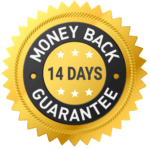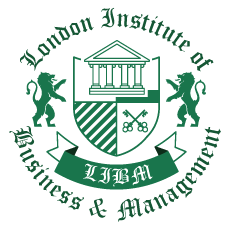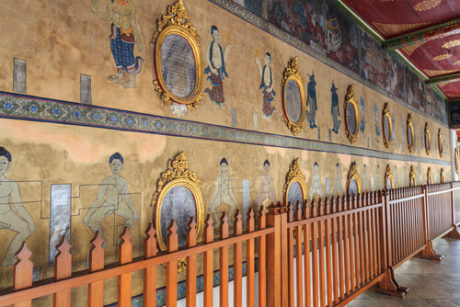Kieran Graham
Read More
Very professional courses. Great Administration assistance and high quality e-learning service.
Sarah Jennings
Read More
I did forex trading diploma. Very professional and detailed course.
Jordan Cooke
Read More
The course offered is excellent. I am glad to have taken it.














Ancient and Medieval Times
Archaeological evidence of massage has been found in many ancient civilizations including China, India, Japan, Korea, Egypt, Rome, Greece, and Mesopotamia.
BC 2330: The Tomb of Akmanthor (also known as “The Tomb of the Physician”) in Saqqara, Egypt depicts two men having work done on their feet and hands, presumably massage.
BC 722-481: Huangdi Neijing is composed during the Chinese Spring and Autumn period (the beginning of recorded history). The Nei-jing is a compilation of medical knowledge known up to that date, and is the foundation of Traditional Chinese Medicine. Massage is referred to in 30 different chapters of the Nei Jing. It specifies the use of different massage techniques and how they should be used in the treatment of specific ailments, and injuries. Also known as “The Yellow Emperor’s Inner Canon”, the text refers to previous medical knowledge from the time of the Yellow Emperor (approx 2700 BC), misleading some into believing the text itself was written during the time of the Yellow Emperor (which would predate written history).
BC 700 Bian Que, the earliest known Chinese physician uses massage in medical practice.
BC 500 Jīvaka Komarabhācca, also known as Shivago Komarpaj, the founder of Traditional Thai massage (Nuad Boran) and Thai medicine.[citation needed] According to the Pāli Buddhist Canon, Jivaka was Shakyamuni Buddha’s physician.[citation needed] He codified a healing system that combines acupressure, reflexology, and assisted yoga postures.[citation needed] Traditional Thai massage is generally based on a combination of Indian and Chinese traditions of medicine. Jivaka is known today as “Father Doctor” in Thailand.
BC 493: A possible biblical reference documents daily “treatments” with oil of myrrh as a part of the beauty regimen of the wives of Xerxes (Esther, 2:12).
BC 460: Hippocrates wrote, “The physician must be experienced in many things, but assuredly in rubbing”.
BC 300 Charaka Samhita believed to be the oldest of the three ancient treatises of Ayurvedic medicine, including massage. Sanskrit records indicate that massage had been practised in India long before the beginning of recorded history.
AD 581: Dr. Sun Si Miao introduces ten new massage techniques and systematized the treatment of childhood diseases using massage therapy.
AD 581: China establishes a department of massage therapy within the Office of Imperial Physicians.
One of the greatest Persian medics was Avicenna, also known as Ibn Sina, who lived from 980AD to 1037AD. His works included a comprehensive collection and systematisation of the fragmentary and unorganised Greco-Roman medical literature that had been translated Arabic by that time, augmented by notes from his own experiences. One of his books, Al-Qānūn fī aṭ-Ṭibb has been called the most famous single book in the history of medicine in both East and West. Avicenna excelled in the logical assessment of conditions and comparison of symptoms and took special note of analgesics and their proper use as well as other methods of relieving pain, including massage.
AD 1150: Evidence of massage abortion, involving the application of pressure to the pregnant abdomen, can be found in one of the bas reliefs decorating the temple of Angkor Wat in Cambodia. It depicts a demon performing such an abortion upon a woman who has been sent to the underworld. This is the oldest known visual representation of abortion.
AD 1776: Jean Joseph Marie Amiot and Pierre-Martial Cibot, French missionaries in China translate summaries of Huangdi Neijing, including a list of medical plants, exercises and elaborate massage techniques, into the French language, thereby introducing Europe to the highly developed Chinese system of medicine, medical-gymnastics, and medical massage.
AD 1776 Pehr Henrik Ling, a Swedish physical therapist, and teacher of medical-gymnastics is born. Ling has often been erroneously credited for having invented “Classic Massage” aka “Swedish Massage”, and has been called the “Father of Massage”.
AD 1779: Frenchman Pierre-Martial Cibot publishes ‘Notice du Cong-fou des Bonzes Tao-see’ also known as “The Cong-Fou of the Tao-Tse”, a French language summary of medical techniques used by Taoist priests. According to Joseph Needhan, Cibot’s work “was intended to present the physicists and physicians of Europe with a sketch of a system of medical gymnastics which they might like to adopt—or if they found it at fault they might be stimulated to invent something better. This work has long been regarded as of cardinal importance in the history of physiotherapy because it almost certainly influenced the Swedish founder of the modern phase of the art, Per Hendrik Ling. Cibot had studied at least one Chinese book, but also got much from a Christian neophyte who had become an expert in the subject before his conversion.”
AD 1813 the Royal Gymnastic Central Institute for the training of gymnastic instructors was opened in Stockholm, Sweden, with Pehr Henrik Ling, appointed as principal. Ling developed what he called the “Swedish Movement Cure.” Ling died in 1839, having previously named his pupils as the repositories of his teaching. Ling and his assistants left little proper written account of their methods.
AD 1878: Dutch massage practitioner Johan Georg Mezger applies French terms to name five basic massage techniques, and coins the phrase “Swedish massage system”. These techniques are still known by their French names (effleurage (long, gliding strokes), petrissage (lifting and kneading the muscles), friction (firm, deep, circular rubbing movements), tapotement (brisk tapping or percussive movements), and vibration (rapidly shaking or vibrating specific muscles)).
China: Massage has developed continuously in China for over 5000 years.[citation needed] Western ideas are considered within the traditional framework. It is widely practised and taught in hospital and medical schools and is an essential part of health maintenance and primary health care.
United States: Massage started to become popular in the United States in the middle part of the 19th century and was introduced by two New York physicians based on Per Henrik Ling’s techniques developed in Sweden.
During the 1930s and 1940s massage’s influence decreased as a result of medical advancements of the time, while in the 1970s massage’s influence grew once again with a notable rise among athletes. Until the 1970s, nurses used massage to reduce pain and aid sleep. The massage therapy industry is continuously increasing. In 2009, U.S. consumers spent between $4 and $6 billion on visits to massage therapists. In 2015, research estimates that massage therapy was a $12.1 billion industry.
United Kingdom: Massage is popular in the United Kingdom today and gaining in popularity. There are many private practitioners working from their own premises as well as those who operate from commercial venues.
Massage in sports, business and organizations: Massage developed alongside athletics in both Ancient China and Ancient Greece. Taoist priests developed massage in concert with their Kung Fu gymnastic movements, while Ancient Greek Olympians used a specific type of trainer (“aleiptes”)[20] who would rub their muscles with oil. Pehr Ling’s introduction to massage also came about directly as a result of his study of gymnastic movements.
The 1984 Summer Olympics in Los Angeles was the first time that massage therapy was televised as it was being performed on the athletes. And then, during the 1996 Summer Olympics in Atlanta massage therapy was finally offered as a core medical service to the US Olympic Team. Massage has been employed by businesses and organizations such as the U.S. Department of Justice, Boeing and Reebok. Notable athletes such as Michael Jordan and LeBron James have personal massage therapists that at times even travel with them.
-

Add a note